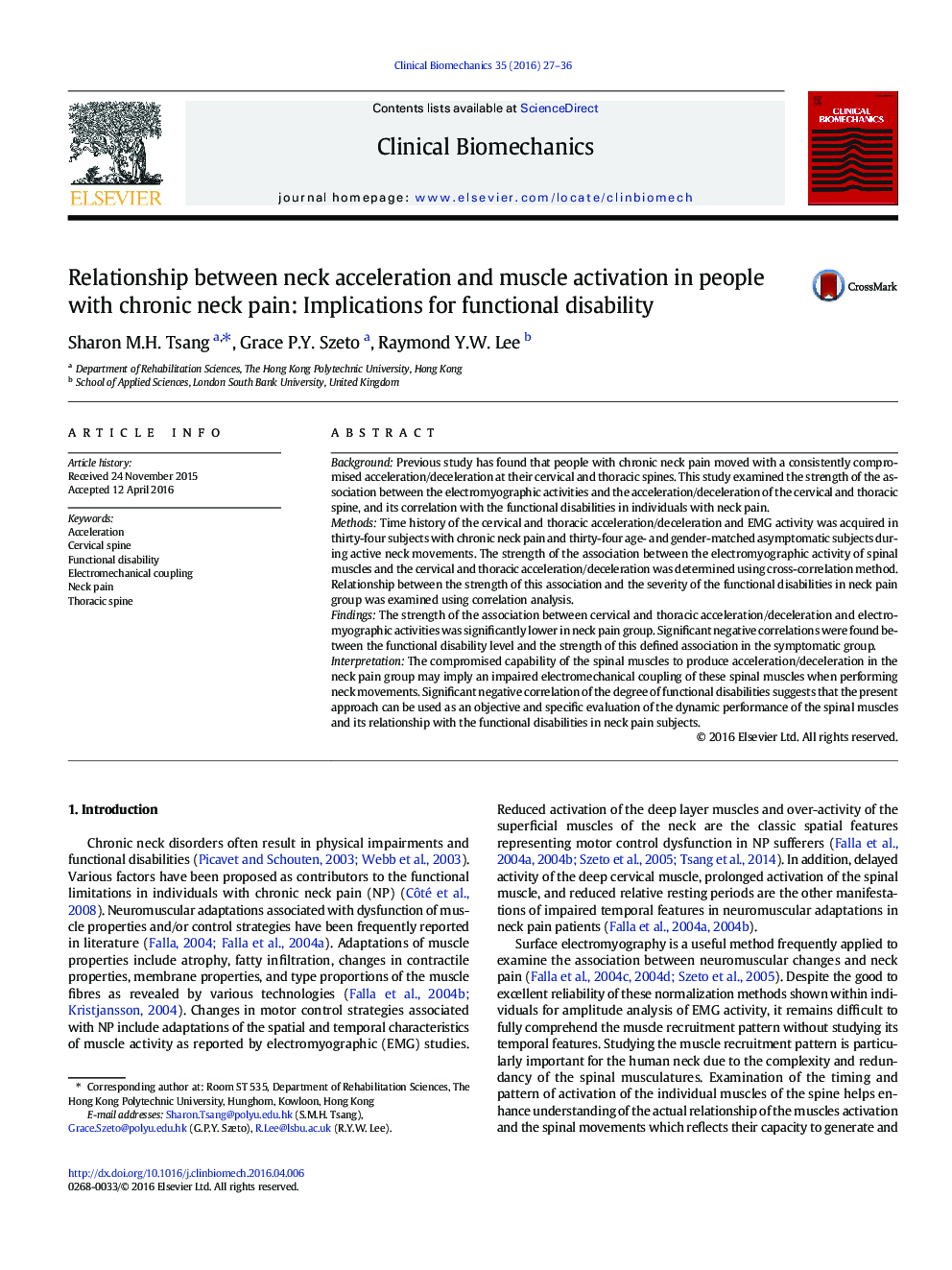| Article ID | Journal | Published Year | Pages | File Type |
|---|---|---|---|---|
| 4050105 | Clinical Biomechanics | 2016 | 10 Pages |
•Relationship between acceleration/deceleration and electromyographic activities of the neck•Electromechanical coupling of spinal muscles was impaired in neck pain•Degree of impairment was significantly correlated with functional disability•A novel method to evaluate dynamic performance of the spinal muscles
BackgroundPrevious study has found that people with chronic neck pain moved with a consistently compromised acceleration/deceleration at their cervical and thoracic spines. This study examined the strength of the association between the electromyographic activities and the acceleration/deceleration of the cervical and thoracic spine, and its correlation with the functional disabilities in individuals with neck pain.MethodsTime history of the cervical and thoracic acceleration/deceleration and EMG activity was acquired in thirty-four subjects with chronic neck pain and thirty-four age- and gender-matched asymptomatic subjects during active neck movements. The strength of the association between the electromyographic activity of spinal muscles and the cervical and thoracic acceleration/deceleration was determined using cross-correlation method. Relationship between the strength of this association and the severity of the functional disabilities in neck pain group was examined using correlation analysis.FindingsThe strength of the association between cervical and thoracic acceleration/deceleration and electromyographic activities was significantly lower in neck pain group. Significant negative correlations were found between the functional disability level and the strength of this defined association in the symptomatic group.InterpretationThe compromised capability of the spinal muscles to produce acceleration/deceleration in the neck pain group may imply an impaired electromechanical coupling of these spinal muscles when performing neck movements. Significant negative correlation of the degree of functional disabilities suggests that the present approach can be used as an objective and specific evaluation of the dynamic performance of the spinal muscles and its relationship with the functional disabilities in neck pain subjects.
